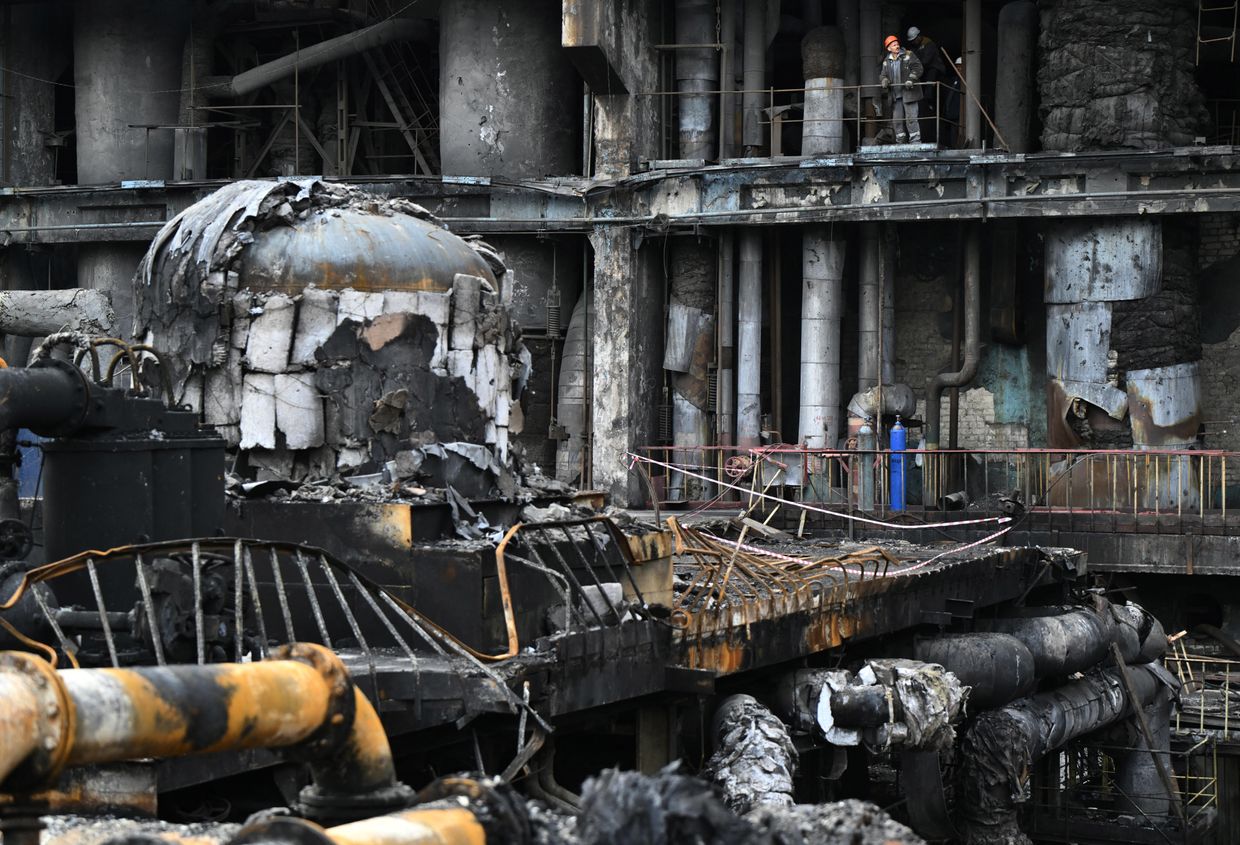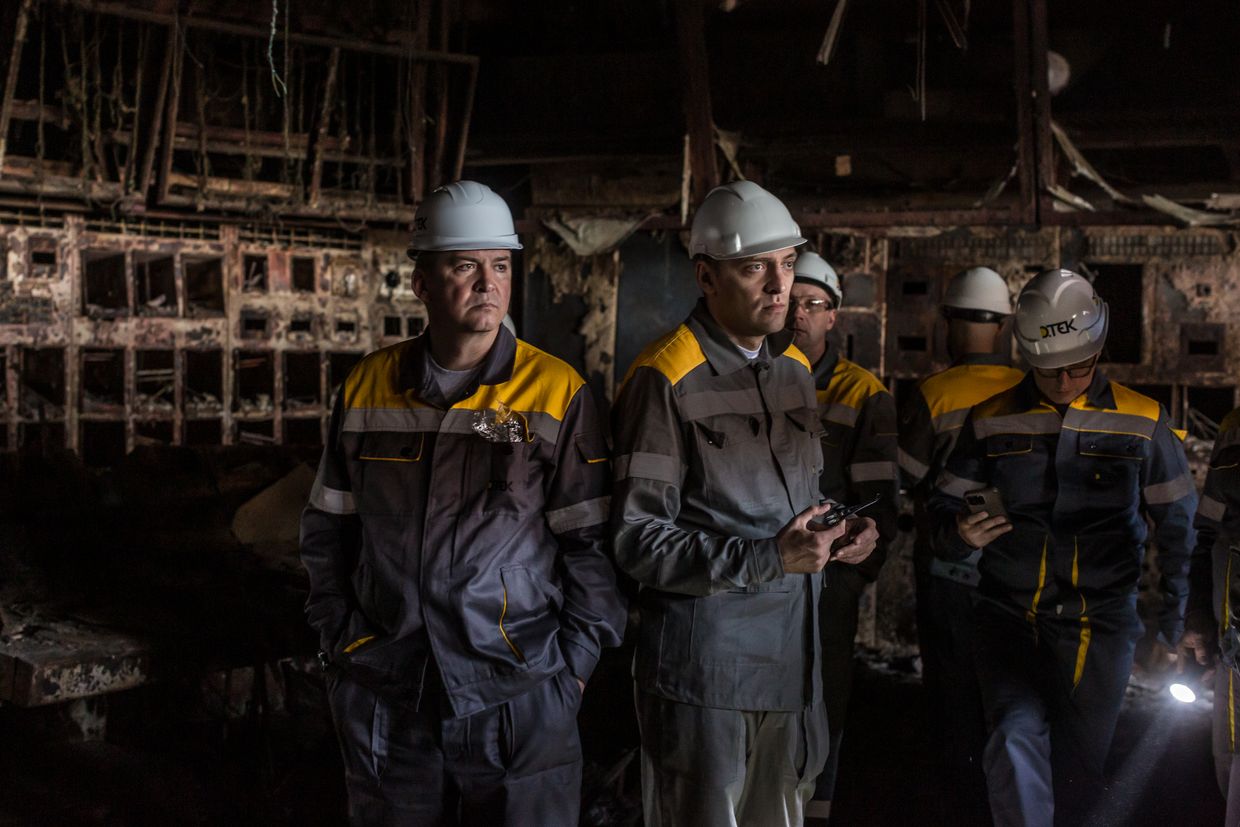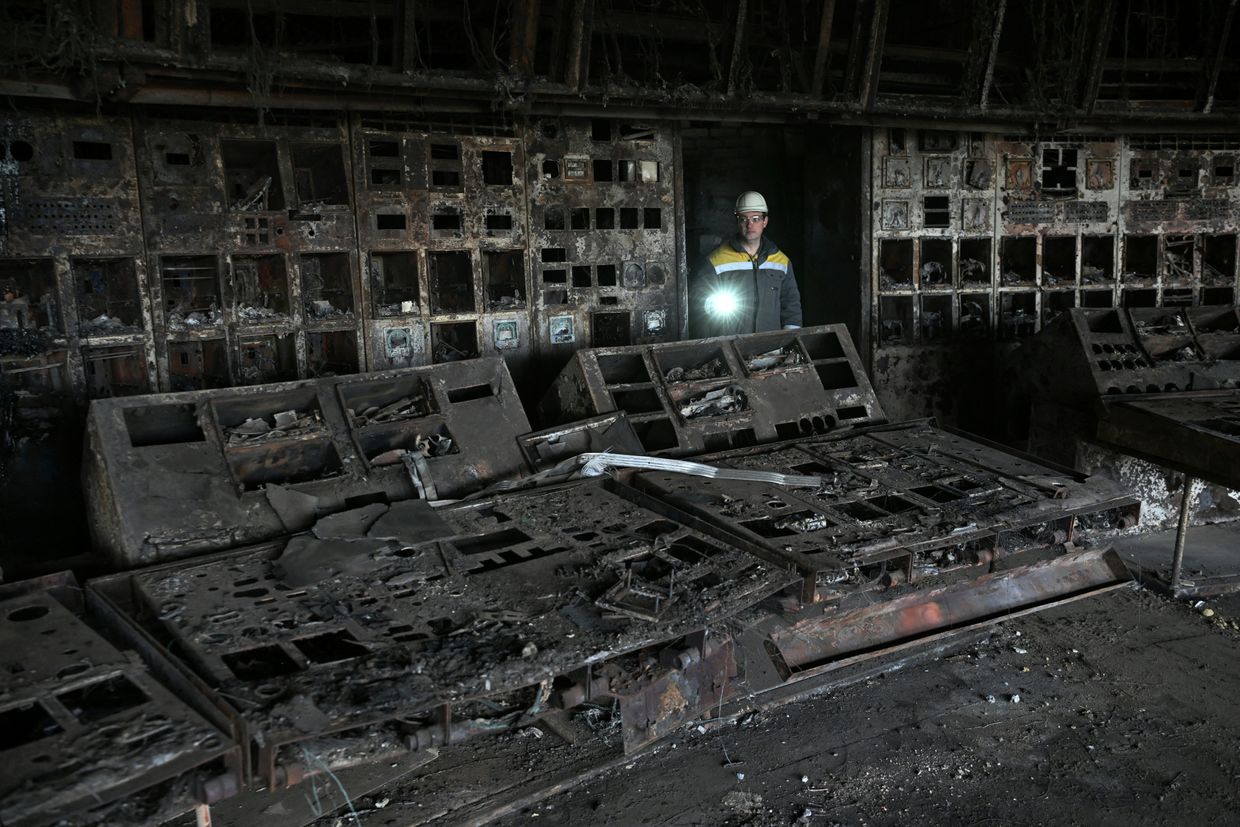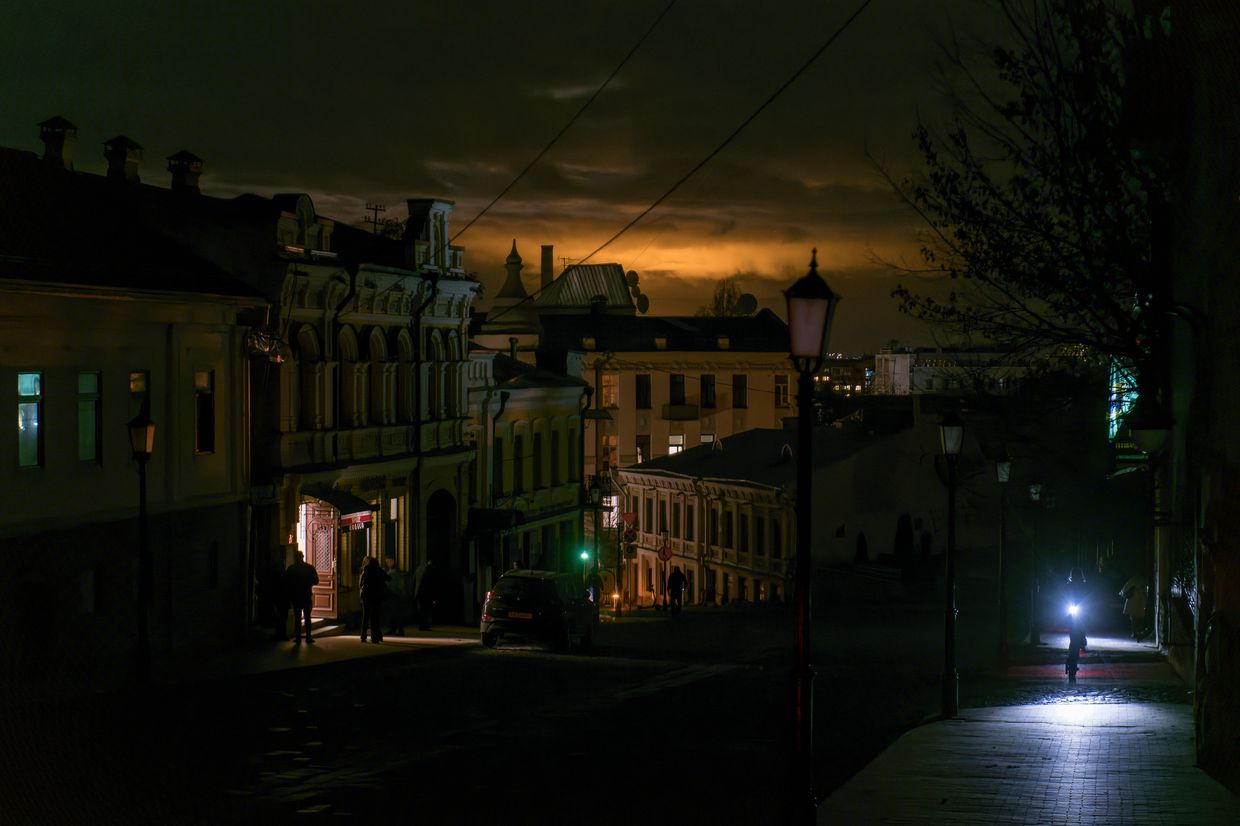Ukrainians could face up to 20 hours of blackouts a day under a “worst-case” scenario if the country cannot repair and properly defend its energy infrastructure from Russian attacks, Executive Director of Ukraine’s largest privately-owned energy company DTEK Dmytro Sakharuk told the Kyiv Independent in an interview on June 9.
The company has assessed various scenarios, with the worst being based on a continuation of the status quo — a dearth of air defenses to protect critical infrastructure and the financing to make repairs.
Even if the country makes repairs, without missiles for air defense systems, Russia can easily keep targeting the energy system as it wants.
Under what it considers the worst-case scenario, DTEK itself would continue to run with around 10% of pre-war levels of thermal power generation, and deficits would be around 2-4 gigawatts (GW) a day. The deficit across the whole system will be around 25%, undoubtedly leading to long blackouts.
A Russian attack on April 11 destroyed state-owned Centrenergo’s Trypillia Thermal Power Plant in Kyiv Oblast, leading to the destruction of 100% the company's generation capacity. Russia earlier destroyed the company's Zmiiv Thermal Power Plant during a March 22 strike on Kharkiv Oblast and another plant has been under occupation since 2022.


In this scenario, large plants could start feeling the absence of electricity in November, defense enterprises could feel the squeeze in December, and crucial infrastructure like water and sewage systems in January 2025, the company has assessed.
“This is very close to realistic right now. Regarding what will happen this winter, we are heading very quickly to this (scenario),” Sakharuk said.
Russia has stepped up its attacks against Ukraine’s energy facilities since March, completely destroying thermal power plants around the country. Companies have had to schedule blackouts, leaving consumers without power for several hours a day at times.

The attacks came just as Ukraine was running out of air defense missiles and further aid from the U.S. was held up in Congress.
Speaking at the Ukraine recovery conference on June 11, President Volodymyr Zelensky said that Russian and drone attacks have destroyed 9 gigawatts (GW) of Ukraine's capacity total energy capacity.
The peak energy consumption last winter was 18 GW — "half of that is gone now," Zelensky noted.
Ukrainian oil and gas giant Naftogaz CEO Oleksiy Chernyshov said at the conference that “it will be impossible to get another 9 GW by winter" even if the country will be able to repair some infrastructure before then.

DTEK alone has suffered a 90% loss in thermal power generation capacity after Russia targeted its assets — including its thermal power generation, hydropower facilities, and solar panels — six times in its latest series of attacks.
Even the best-case scenario DTEK has determined — one in which there are no new attacks, air defense can properly defend critical assets, imports increase, and both DTEK and state-owned energy company Centrenergo can make repairs — would still come with pains.
Big enterprises, like metallurgical and defense production facilities, would have the power to work, but there would still be a deficit of up to 12% in the energy system. Blackouts would likely still be anywhere up to 10 hours a day, although they could be shorter depending on the severity of the attacks.
“People need to know these things. It's not a reason for panic. It's a reason to move quickly,” he said.
The country has between 120 and 150 days before the next heating season, depending on whether it starts on the usual Oct. 1 or Nov. 1 as it did last year.
To ready the country in the upcoming months, the country needs to defend, repair, increase the volume of imports, and install as much generation as possible, which Sakharuk believes is realistic.

He noted, however, that the importance of small generation is minimal. “I know about three gas turbines that are being installed right now. Their capacity is 75 megawatts (MW). It’s incomparable (to what we’ve lost).”
Renewables are on the table, but will only become crucially important in two to three years, he said, as renewable energy sources require time to build and financing. “But nobody will give money to these projects right now because they're not protected.”
Much of the outcome of next winter hinges on Ukraine’s energy companies being able to make repairs, which will require donor financing.

DTEK needs roughly $350-400 million to repair its damaged thermal power plants. Last season the company spent $126 million to rebuild units destroyed in Russian attacks. All of them have been damaged again since.
The quickest way, according to Sakharuk, is by taking equipment from old plants around central and eastern Europe.
The company has already started visiting plants in these countries and has already brought back some equipment to do repairs with. The parts “aren’t ideally suited” to the company’s equipment, but given the crisis, they’ve made it work, even if the units are “Frankensteins” as Sakharuk called them.
DTEK has also received approval for funds from USAID which has committed $46 million for the agency to procure critically required equipment for DTEK.
The Energy Ministry has approved another $26 million from the Energy Community Fund for the procurement of critically required equipment.

One big elephant in the room holding DTEK back from attracting financing is its owner — Ukrainian oligarch Rinat Akhmetov.
International financial institutions, like the European Bank for Reconstruction and Development (EBRD), the International Finance Corporation (IFC), and the DFC, have it as a policy not to finance DTEK over its ownership.
The EBRD has invested 4 billion euros in Ukraine since the start of Russia's full-scale invasion of the country in February 2022. Just recently, the bank announced 300 million euros toward Ukraine’s energy security, pledging funds to state-owned energy companies, including Ukrenergo, Ukrhydroenergo, and Ukrnafta.
The bank’s President Odile Renaud-Basso earlier told the Kyiv Independent that it is “very selective with whom it works in Ukraine and that it “does not work with oligarchs.”
On EBRD’s unwillingness to invest in DTEK, Sakharuk said the gravity of the situation outweighs any political reasons for staying away from the company.
“This is an emergency. There is no other way to go through the coming winter if we don't repair the thermal generation and hydro generation that was damaged.”
“If they are committed to helping Ukraine, they must help. This is a moral obligation, but it is also not a time to continue playing games.”













